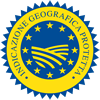Description
The Cappero di Pantelleria PGI refers to the flower bud of the plant belonging to the botanical species Capparis spinosa L., variety Inemis, Nocellara cultivar, which is ripened through salting with fresh sea salt.
Production Area
The production area of Cappero di Pantelleria PGI is on the island of Pantelleria, in the Province of Trapani, in the Sicily region.
Production Method
The volcanic and extremely arid terrain due to lack of rainfall in the Pantelleria area, is ideal for the cultivation of capers. The carefully selected young plants are planted on land that is considered most suitable for cultivation, i.e., terraced and exposed to the sun. Once the cultivation is established, the soil is worked and fertilised during the winter, and the capers are pruned. The capers are hand-picked gradually between May 1st and October 31st, leaving the flower buds that are not ripe enough on the plants. The farmers go back to the plants every 8-10 days, depending on climatic conditions. The salting process is carried out immediately after harvesting; the capers are put into a vat where they are covered with coarse sea salt and stirred every day for a period of 10 days. The vegetation water is then removed before a second salting, during which they are stirred and drained every day for 10 days.
Appearance and Flavour
Cappero di Pantelleria PGI is round, sub-spherical, at times long and cone-shaped, with a green to mustard-yellow colour. It has a characteristic strong smell and an aromatic, typically salty flavour. The percentage of sea salt does not exceed 25% of the weight of the capers.
History
The origins of Cappero di Pantelleria PGI date back to the ancient Greeks and Latins, when capers were already well-known for their culinary uses and beneficial properties, as well as their aphrodisiac properties, which are even mentioned in the Bible. In his famous 6th century culinary work La singolar Dottrina, Domenico Romoli, known as Panunto, wrote that “those who eat them shall not suffer pain in either the spleen or liver [...] they are opposed to melancholy”. In 1855, specific references were made in the Breve cenno sulla Geognosia ed Agricoltura dell’isola di Pantelleria, an essay by Pietro Calcara that was published in Palermo, in the Giornale della Commissione d’Agricoltura e Pastorizia in Sicilia. The essay highlights the economic and commercial value of the caper for society in Pantelleria at the time. Since then, the caper has become increasingly important for the local economy and is now the most cultivated crop in the area.
Gastronomy
Cappero di Pantelleria PGI should be kept in their natural state, covered with sea salt. They can be kept for years in this way, maintaining their excellent organoleptic properties. The excess salt must be removed before eating, by washing them under running water. Capers are a basic ingredient in Mediterranean cuisine, combined with pasta, meat and fish. It is the protagonist of Pizza Napoletana TSG, as well as many Sicilian pizzas. It is also used in puttanesca pasta sauce and Pantesco pesto, together with tomatoes, oregano, anchovies and black olives. It has diuretic, astringent and digestive properties.
Marketing
The product is marketed as Cappero di Pantelleria PGI. It is sold in glass or plastic recipients.
Distinctive Features
The flavour of the Cappero di Pantelleria PGI is more intense and sharper than other capers due to the extremely high quantities of a type of protein called glucocaperine, which is found in the volcanic soil where it is produced.



















